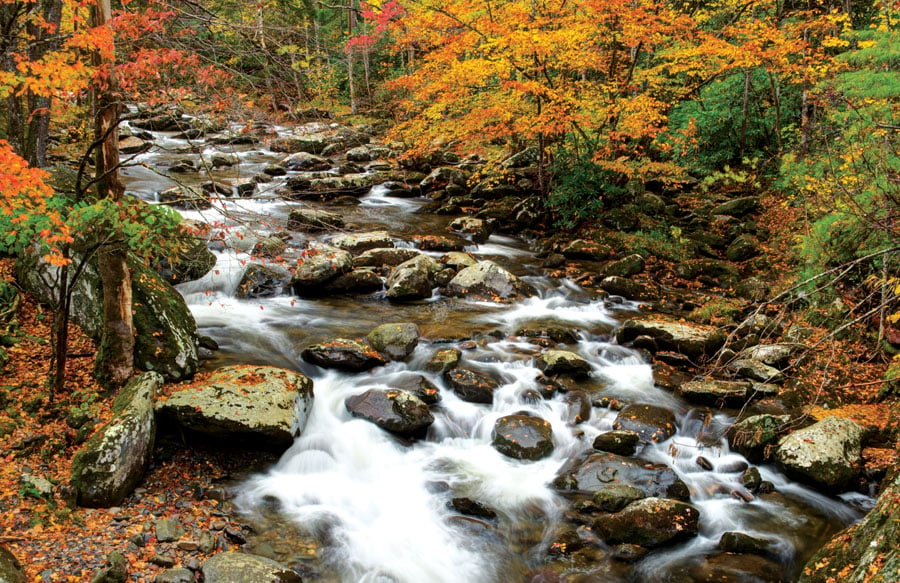Matt Kulp, a senior biologist for the National Park Service (NPS), stood alongside members of the Little River, Great Smoky Mountains, and Clinch Mountain chapters of Trout Unlimited as they donned wading gear, put on hats, and applied sunscreen. Surprisingly, they’d left their fishing gear at home. Nevertheless, the anglers hoped to land thousands of brook trout by assisting NPS employees in a field test of a stream in the Great Smoky Mountains National Park (GSMNP).
Kulp and his assistants were preparing to test the results of an effort to restore native brook trout to Lynn Camp Prong, a mid-sized trout stream in the GSMNP. At some point in the past, a well-meaning but ignorant individual transplanted a number of rainbow trout into the stream. The transplanted trout thrived and quickly began crowding out the native brook trout.
As early as 2005, Park officials began trying to uproot the rainbows. After electro-shocking the rainbows proved ineffective, NPS employees shocked brookies instead, moved them out of the stream and into adjacent streams within the park, and then released the fish-killing chemical antimycin into Lynn Camp Prong. Officials were convinced that such drastic action was the only way they could be certain that the invasive rainbow trout would not return.
By 2010, officials believed that all the rainbows had been extirpated from the stream. They then painstakingly moved nearly 1,000 native brookies from their temporary homes back to Lynn Camp Prong. Workers captured the fish and walked them in buckets outfitted with aeration pumps back to the stream. When all was said and done, the brookies proved to be in even greater abundance than the rainbows found here earlier.
Lynn Camp Prong is ideal for brookies and a boon for trout anglers. “Many of our brook trout streams are at high elevations that are more susceptible to acid deposition, so this lower elevation segment will provide better buffering capacity against acid rain for years to come,” says Kulp. The Lynn Camp project reconnects some tributaries, such as Marks Creek, Indian Flats Prong, and Panther Creek that now also have brook trout in them, and it will also supply fish downstream to Thunderhead Prong.
Reopening Lynn Camp Prong was a significant milestone. It marks the first time that every stream in the park was open to fishing and harvest since the park’s inception in 1936.








